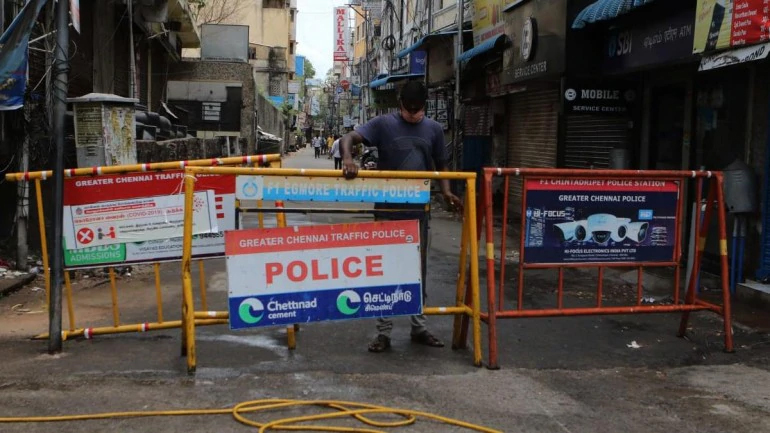As Tamil Nadu has been going through the fourth phase of the unprecedented lockdown to curb the spread of the Coronavirus pandemic, the state government has rolled out the new guidelines for defining the containment zones as part of its containment strategies to mitigate the grounds of the rapid spread.
The government has issued the updated guidelines amid soaring high cases as Tamil Nadu's tally has crossed 12,000 on Tuesday which is the second-highest number in the country. According to the fresh guidelines, the government would map the area as the containment zone if it has reported more than five positive cases or more than five families infected to the virus, and this area would be bordered and separated from the uninfected areas with tight restrictions.
Previously, as per the guidelines that were issued in March, containment zones would be mapped for a radius of five kilometers from the residence of the COVID-19 affected patient and these zones were bordered into sectors with 50 residences in each sector for the extensive monitoring by the medical and frontline workers. Now, the government has revised and replaced with the new set of guidelines that came into effect along with the fourth spell of the lockdown.
According to the reports, if five or more than five individuals or five families tested positive for the virus in a village, as per the fresh guidelines, the entire village will be marked as a containment zone with restricting to and fro movements. As far as slum areas are concerned, the families that were tested positive for the virus will be kept under the institutional quarantine as these areas are known for housing dense population.

If five or more individuals or families confirmed to be contracted to the virus in a corporation or municipality, the streets where affected families reside will be marked as the containment zones and in the case of apartments, the entire premises or the affected block will be considered as a containment zone. If these areas have below five individuals or families tested positive, only the affected residences and their neighbors will be kept under quarantine based on the requirement.
According to the guidelines, the authorities would be installing clear entries and exits to the containment zones, and only emergencies and essential services are permitted to ply and other movements will be barred. All the households in the containment zones will go through surveillance and one health officer will be deputed for surveillance in the containment zone in rural areas whereas one health worker will be assigned for hundred houses in the urban areas.
The reports stated that people moving to and fro of the containment zones would be recorded and followed with accord to the Integrated Disease Surveillance Project issued by the Union Health Ministry and no new cases have been reported over 14 days in these containment zones, the operations will be seized. Each containment zone would have a buffer zone surrounded by its borders and for the containment zones in rural areas, the buffer zone would be for 0.5 km, and, for urban areas, it would be marked based on the local conditions.
The government would carry out extensive monitoring and surveillance in the containment and buffer zones and the health workers have been instructed to report the COVID-19 cases to the district control rooms. Chennai has the most number of containment areas in Tamil Nadu and as of Tuesday, the city has 758 areas in its 15 zones and the city has reported 7,672 cases so far which has contributed nearly 70% of the total number of affected cases in the state. As of Tuesday evening, the state has reported 12,448 positive cases.
Also read: Why Chennai has a rising number of COVID-19 cases outside containment zones?









Comments